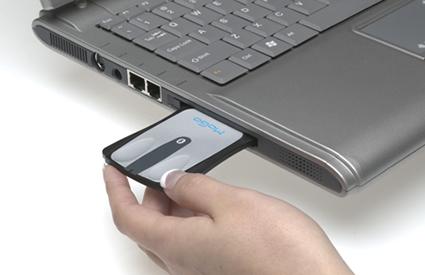- Related articles
- How to Test a Fiber Optic Transceiver?
- The Difference between Single Mode Fiber and Multi mode Fiber
- Optical Transceivers for Cisco SG200-26FP-EU Switch
- Optical Transceivers for Cisco SG300-10MPP-K9-EU Switch
- Optical Transceivers for Cisco WS-C2960+24LC-L Switch
- All Cisco MA-SFP-1GB-TX's information (List price, Specs, Datasheet PDF, Compatibility mat
- Optical Transceivers for Cisco WS-C3650-48PS-S Switch
- All Cisco GLC-FE-100BX-U's information (List price, Specs, Datasheet PDF, Compatibility ma
- Optical Transceivers for Cisco WS-C3650-24PWD-S Switch
- Optical Transceivers for Cisco WS-C3650-48TS-L Switch

Short for Personal Computer Memory Card International Association, PCMCIA is a trade association founded in 1989 that is responsible for the ongoing development of the PCMCIA standard. PCMCIA cards are hardware interfaces that are slightly bigger than a standard credit card that enable additional functionality for laptop computers and other portable devices.

PCMCIA Network Card
A PCMCIA card is a credit card-size memory or I/O device that connects to a personal computer, usually a notebook or laptop computer. Probably the most common example of a PCMCIA card is the 28.8 Kbps modem for notebook computers.
A PCMCIA card has a 68-pin connector that connects into a slot in the PC. There are three sizes (or "Types") of PCMCIA cards. The Type I and II cards work in a Type III slot and a Type I card will work in a Type II slot. (On the other hand, the thicker cards can't be fitted into the slots for the thinner cards.)
The PCMCIA standard is most commonly applied to portable PCs but it can also be used on desktop computers. The PCMCIA card is not to be confused with another credit-size electronic card, the smart card.
How to Use PCMCIA Network Card Slot
Each PC Card contains a basic record in a standard location, called the CIS, or Card Information Structure. The CIS describes the card's memory type, size, speed, and other characteristics in such a way that any host computer can read and respond to this information.
Two key elements of the PCMCIA software architecture are Socket Services and Card Services. Socket Services is a software interface running at the BIOS level that manages the host computer's use of the sockets in the PCMCIA slots. It identifies how many sockets are in the computer system and monitors for insertion or removal of PC Cards from the sockets. Cards can be inserted or removed without damage while the power is on (this is called hot swapping).
Card Services is a higher-level software-management interface that automatically allocates system resources, such as memory and interrupts, once it's notified by Socket Services that a PC Card is present. It also reallocates resources when notified that a card has been removed. Hardware drivers interact with Card Services to access the card in the slot.
Intel sponsors its own standard version of Card Services designed for the specific needs of Intel-based processors. The Exchange Card Architecture, or ExCA standard, was created before Card Services. Card Services was based on ExCA, but isn't Intel-specific.
With these services in place--as they are on any computer with a PCMCIA standard slot--you have complete freedom to pop cards in and out of your computer as your work demands. You don't have to worry about memory blocks, port assignments, or interrupt assignments; the PCMCIA interface software handles all of that automatically.
Summary
In any case, it seems clear that the PCMCIA standard PC Cards will play a big role in the future of computing. The standards are in place, the Card devices are ready to ship, and new computers are being built with PCMCIA slots. Even if you're not ready to participate in the boom yourself, it will be fascinating to watch this new technology burst into the computing world.





















































